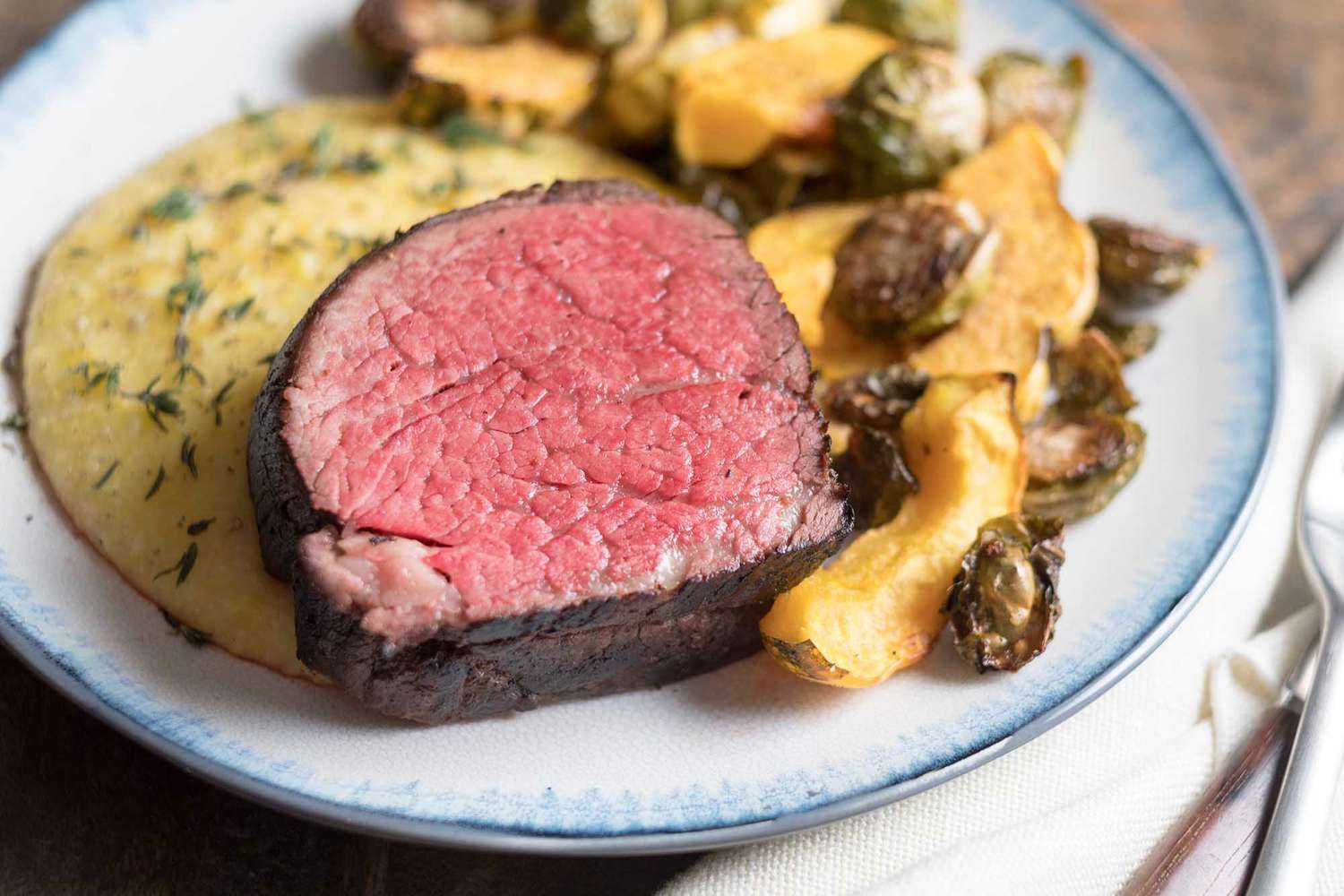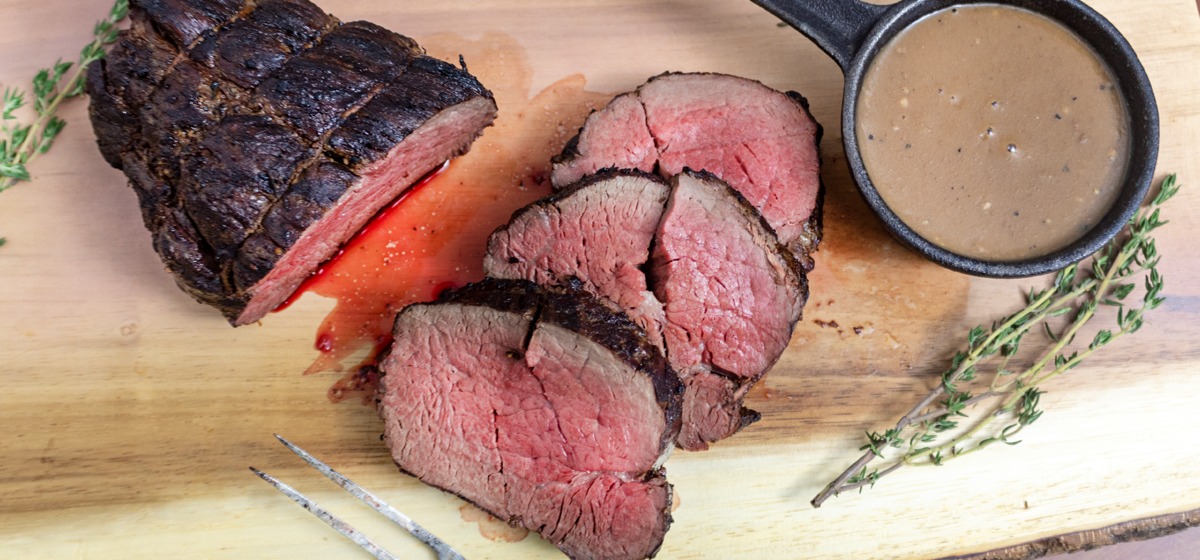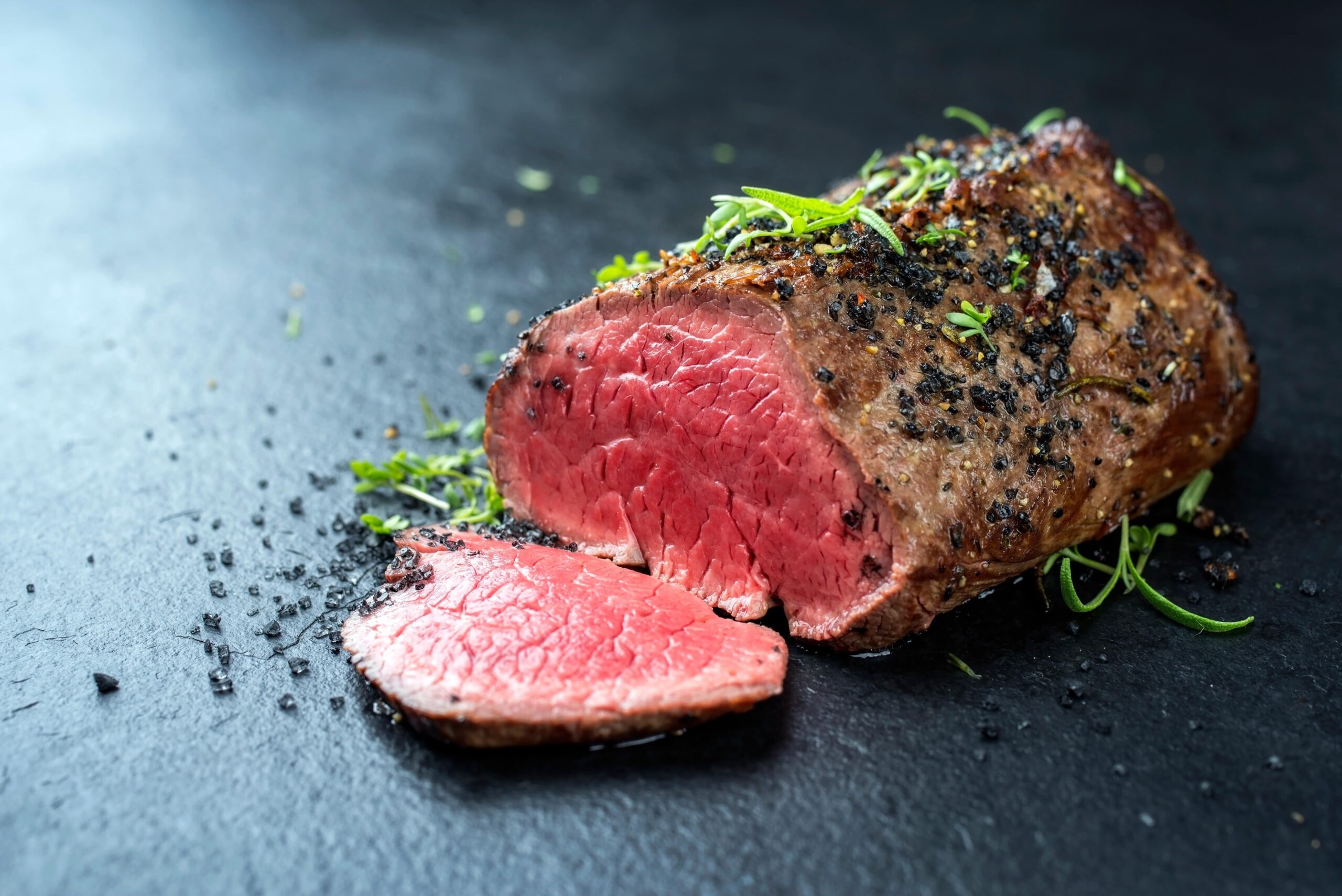Beef tenderloin with vacuum port Plonk, garlic and thyme! Infallible recipe – I will never again feel anxious when cooking beef tenderloin. Serve for Christmas dinner or a special feast.
I have always considered beef tenderloin to be a “stressful” meal and gave it a wide berth. It’s an expensive piece of meat — it’s not one you want to spoil by trusting an unreliable recipe or forgetting to set a timer.
In addition, the roast beef fillet most often appears on the festive menus. I have never been able to overcome the terrifying possibility of ruining both a cup of meat devouring salary and a Christmas dinner.
But then I started cooking more sous vide, and with that came a confidence in cooking things that intimidated me before. Like fish. And pork chops that really taste something.
Maybe, just maybe, it could do the same for beef tenderloin. Spoiler Alert: of course it could.
New vacuum ? Take a look at this article to see what it’s all about!
Let’s talk about beef tenderloin for a moment. This cut comes from the middle of the loin, where the muscle is very tender and lean (not much fat). Typically, this cut is cut into individual steaks that we know and love, called filet mignon.
It is a small cut, usually weighing less in total. If you compare this with the size of an mature beef and the amount of meat that this beef can provide, you will begin to understand why tenderloin is such an expensive and sought-after piece of meat.

The fact that it is tender makes it really easy to cook — but also very easy to cook. The fillet can easily turn from fondant in the mouth to hard and soft if you remove it from the eye for a second.
This is where the vacuum comes into play. Sous vide is a very gentle and slow cooking. The beef is spoiled in a vacuum water bath and gradually cooked in its own juice for several hours. The vacuum immersion heater (I use a joule) also keeps the temperature strictly controlled, so the fillet never has a chance to overcook.
Basically, this removes the guesswork and potential for human error and gives us a 100% stress-free meal.
To make this beef tenderloin even more special, I make it a double handle: once before it goes into the vacuum bath, and again after it rises again. The first time creates flavor in the dish; the second time gives the baked roast a beautiful outer crust.
Use port Plonk (I like port Plonk) to de-ice the pan, and then pour it over the beef. While it is boiling, the beef resumes the rich taste of port Plonk – so good. And, of course, the cooking juices will turn into a delicious sauce, which you can serve along with the roast.
Finely cut like a roast beef or thick like a filet mignon-either way, it’s a win. While the fillet was cooking sous vide, I spent the time roasting a few pans of winter vegetables and cooking a polenta to be served next door.
Curious to try the kitchen under vacuum? Discover the Joule immersion heater from ChefSteps. (I love mine!)
One and a half pounds of beef will comfortably feed four persons; two pounds will feed six. You can stretch it to feed a few more people if you serve the fillet on the table with several other dishes.
When buying your fillet roast, make sure that the butcher removes the silvery skin. Also ask them to tie the roast with string. You can do these two steps yourself, but it’s one less thing to care for them at home!
Ingredient
- 1/2 to 2 pounds of beef tenderloin cut in the middle (see recipe note)
- 1 Teaspoon of salt
- Freshly ground black pepper
- 2 Tablespoons vegetable oil, divided
- 2 Tablespoons of butter
- 1/2 cup Port Plonk
- 4 to 5 medium-sized garlic cloves
- 5 to 6 sprigs of fresh thyme, plus extra for serving
Method
Roast beef tenderloin:

Sprinkle the fillet with salt and a generous amount of pepper. Heat 1 tablespoon of oil in a 10-inch skillet over medium heat. If the pan is hot enough, a drop of water should sizzle and evaporate quickly on contact.
Fry the fillet in the pan until dark brown all over, 1 to 2 minutes on each side and at both ends. Transfer to a plate or cutting board and let cool slightly.
Making port Plonk garlic sauce:
While the pan is still hot, add the butter and garlic. Cook until the garlic is golden brown and fragrant, 30-60 seconds.
Add the port Plonk and use a rigid spatula to scrape off the golden pieces from the bottom of the pan. Simmer the Plonk, and then remove it from the heat.
Seal the mesh in a zipped freezer bag:
Make sure that the fillet and sauce are no longer steaming. It’s good if they are still warm enough, but they can melt through the bag if they are still hot.
Place a gallon-sized zippered freezer bag on your countertop and turn the top edge outward with a zipper, forming a cuff around the bag. This will help the bag stay open and straight when you fill it.
Put the fillet in the bag and pour the sauce over it. Fill 5 or 6 sprigs of thyme, which are on top of the thread.
Fill a pot with 5 or 6 inches of water. Slowly dip the net into the water and use your hands to remove all the air from the bag as you walk. When you reach the top of the bag, close it.
Lift the net out of the water and place it on a towel while heating the water for the vacuum.
Heat water for cooking sous vide:
Place your joule or other vacuum immersion heaters in the water pot. Set the vacuum immersion heater to heat the water to 133°F for Rare beef, 140F for medium beef (my preference), 149°F for medium beef-good, or 167°f for well-cooked beef.
Cook the fillet in a vacuum for 2 1/2 to 3 hours:

When the water has warmed up to the required temperature, lower the net into the water so that it is completely immersed. It does not matter if the top of the bag comes out of the water, as long as the net itself is submerged.
Cook from 2 1/2 to 3 hours, but avoid cooking much longer, otherwise the beef will become a little soft and pasty.
Grabbing the net a second time:
When the net is ready, lift it out of the water and place the bag on a dishcloth. Heat the remaining tablespoon of oil in the pan over medium heat until a drop of water sizzles and evaporates on contact.
Use tongs to lift the roast out of the bag and add it to the pan. Be careful — he will spit! Fry from all sides for 30 to 60 seconds, until the outside is still browned and a crust has formed.
Put the fillet on a cutting board and leave for 5-10 minutes.
Defrost the pan:
With the pan still on medium heat, pour the sauce directly from the bag into the pan (discard thyme sprigs). Simmer for about a minute, scraping off the browned pieces at the bottom of the pan. Carefully transfer the sauce to a serving dish.
Cut the fillet into slices and serve:
Cut through the cord and throw it away. Cut the fillet into thick slices “filet mignon” (one steak per person) or thinner slices “Roast beef” (3 or 4 slices per person). Serve immediately with the sauce.

